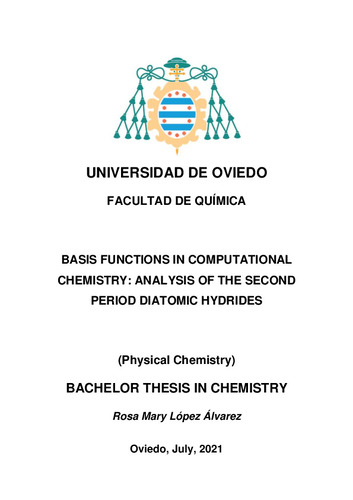Basis functions in computational chemisty: analysis of the second period diatomic hydrides
Author:
Director:
Publication date:
Serie:
Grado en Química
Descripción física:
Abstract:
To build a wavefuction, computational chemists use one-electron functions called spinorbitals. These are expanded as linear combinations of a set of primitive functions, which is called the basis set. Usually these primitive functions are gaussian functions for computational reasons. The basis set is known before-hand, and is selected by the user of an electronic structure code. Usually, the larger the basis set, the better ther results, and the longer the computation. This means that basis sets have to be carefully selected so that a compromise between computation time and accuracy is met. In this work the student will learn the different set of basis sets found in the literature, and examine the convergence of several properties (the energy, the dipole moment, etc) as the basis set is changed in the second period diatomic hydrides.
To build a wavefuction, computational chemists use one-electron functions called spinorbitals. These are expanded as linear combinations of a set of primitive functions, which is called the basis set. Usually these primitive functions are gaussian functions for computational reasons. The basis set is known before-hand, and is selected by the user of an electronic structure code. Usually, the larger the basis set, the better ther results, and the longer the computation. This means that basis sets have to be carefully selected so that a compromise between computation time and accuracy is met. In this work the student will learn the different set of basis sets found in the literature, and examine the convergence of several properties (the energy, the dipole moment, etc) as the basis set is changed in the second period diatomic hydrides.
Collections
- Trabajos Fin de Grado [2019]
Files in this item





